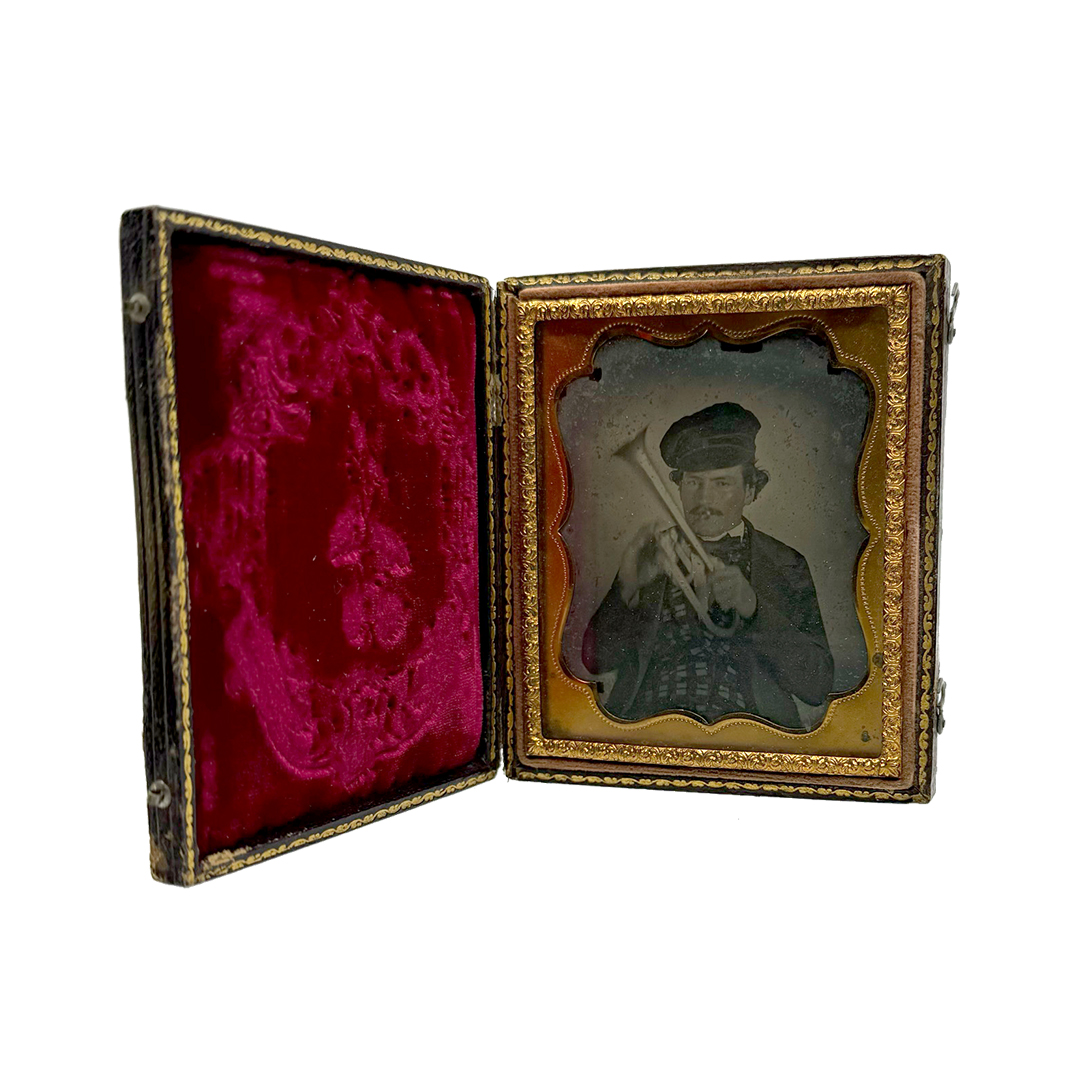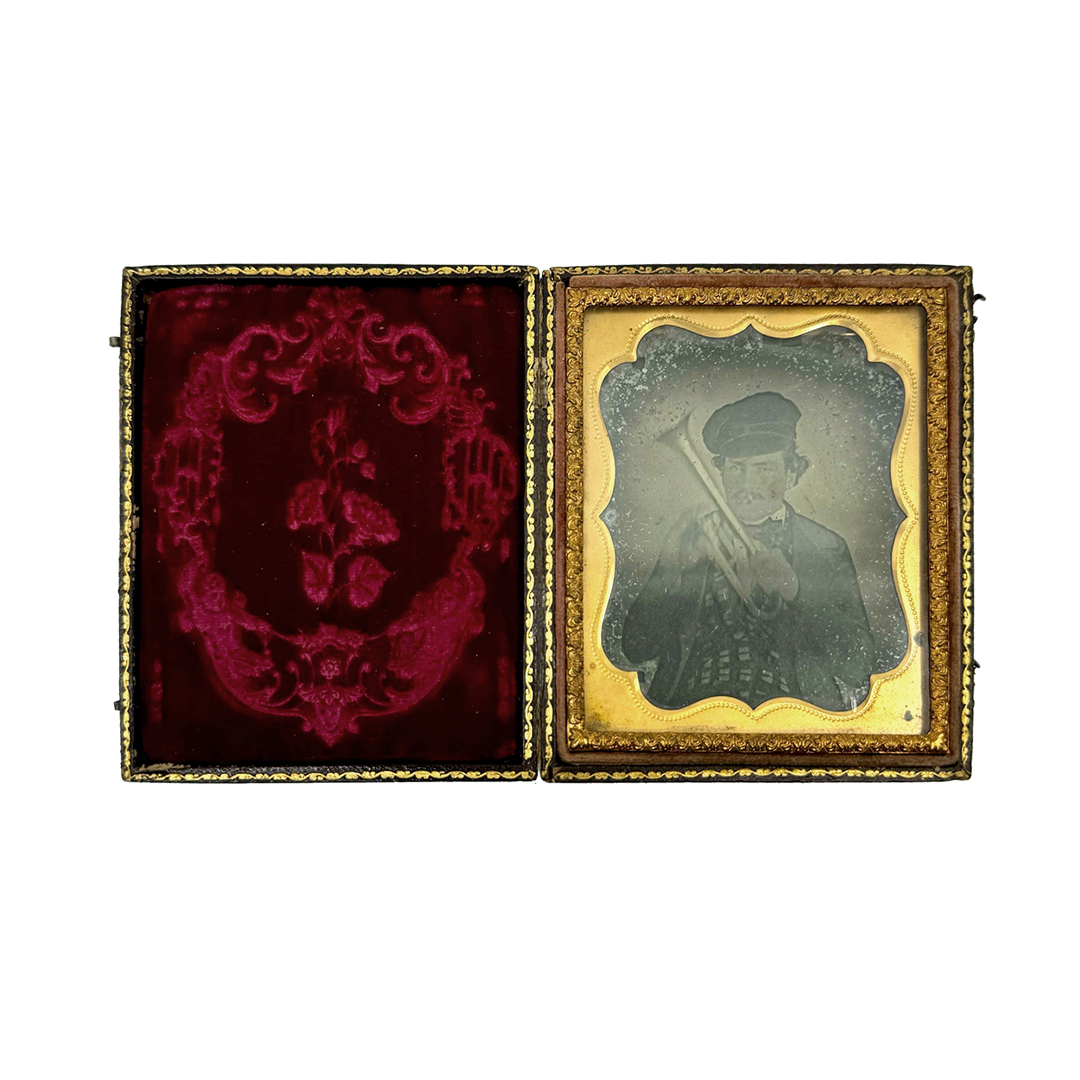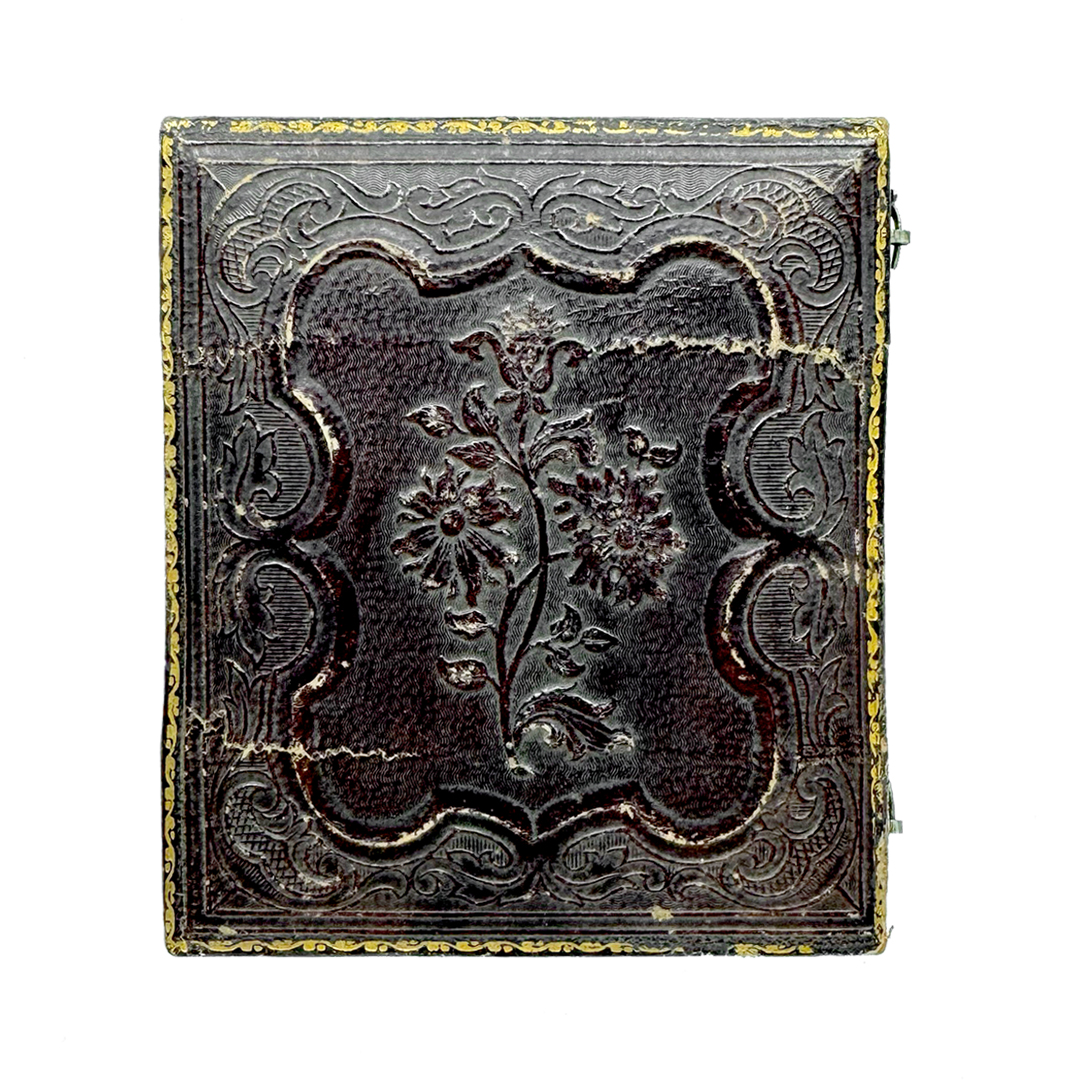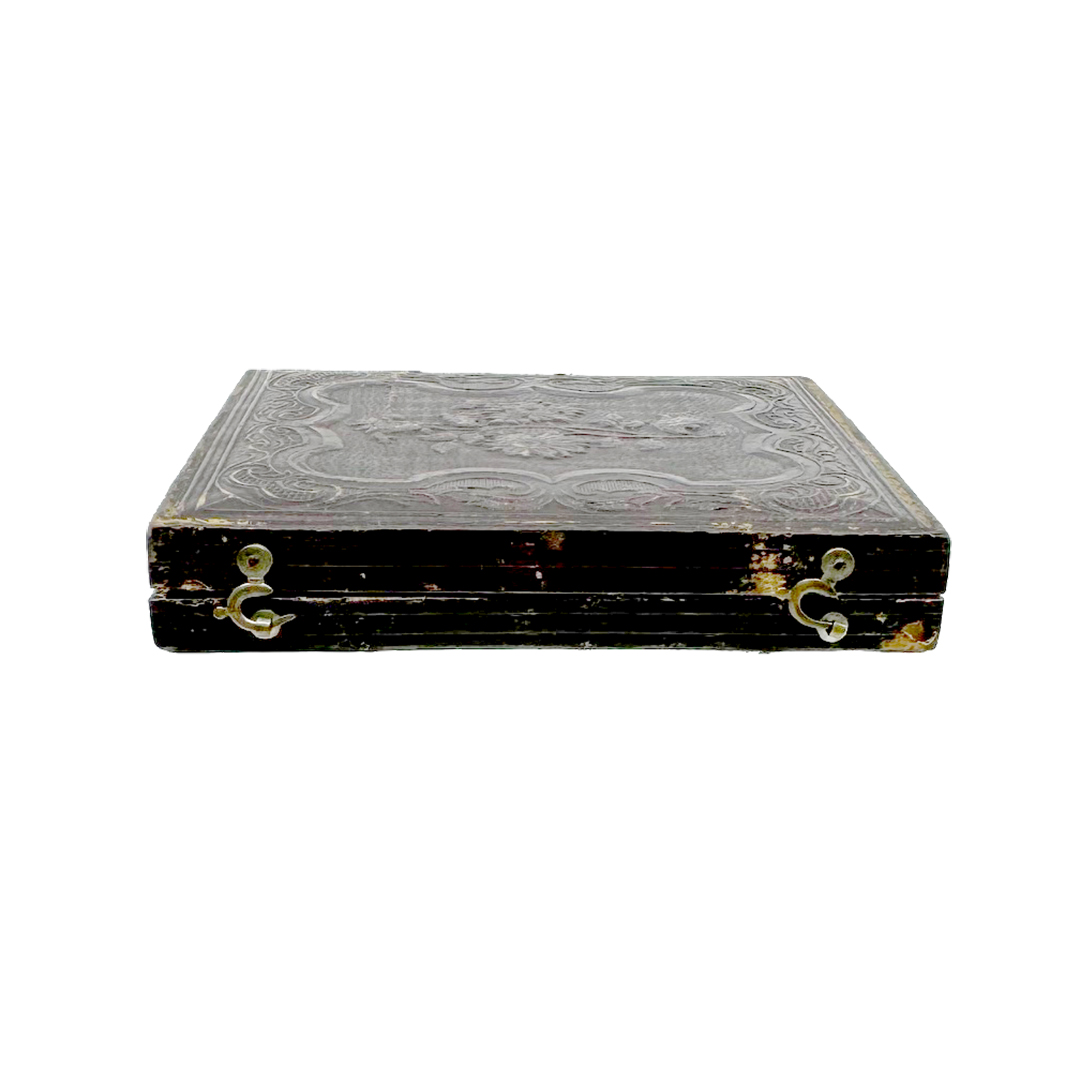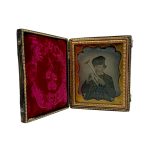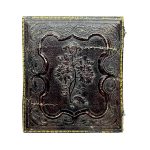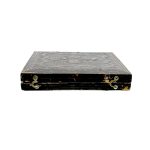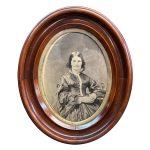Description
Ca.1860s musician 6th plate ambrotype photograph in full pressed paperboard case. Case features gold paint guild on the edges with a nice pressed red velvet mat opposing the image itself in a scalloped copper metal frame.
2.75 x 3.25
These are one of a kind images because there was no negative. Ambrotypes found today are the actual image literally placed in the hand of the sitter, well over 150 years ago. The Ambrotype was first developed in 1851. They were made on a glass plate coated with a wet, light sensitive substance, which when developed and dried, produced a negative image. The negative then had to be mounted against a dark background or coated with a dark varnish to give the illusion of a positive.
Photographers often applied pigments to the surface of the plate to add colour, often tinting cheeks and lips red and adding gold highlights to jewellery, buttons, and belt buckles. The ambrotype was introduced in the 1850s to replace the more expensive daguerreotype, and although they were produced into the 1880s, their popularity had waned by the late 1860s against the less expensive tintypes. Tintypes although weaker in contrast and darker in general, became the photograph of choice from the late 1860s into the early 1900s.
The sizes of early photographs including daguerreotypes, ambrotypes and tintypes are determined and referred to by the portion of a full plate. A full plate is 6.5” × 8.5”; a half-plate is 4.25” × 5.5”; a quarter-plate is 3.25” × 4.25”; the most popular 6th plate is 2.75 x 3.25; a ninth-plate is 2” × 2.5”; and the sixteenth-plate is 1.375” × 1.625”.
Daguerreotypes, Ambrotypes and early tintypes were housed in cases and often referred to as ‘cased images’. Early ornate hard plastic cases are referred to as union cases, sometimes mistakenly identified as guttapercha but collectors know them as “thermoplastic.” They were made from a mixture of wood dust and shellac that was pressed into a mold. The much more common cases while still beautiful in design were made of wood frames covered with leather, paper, cloth, or in some cases mother of pearl.

